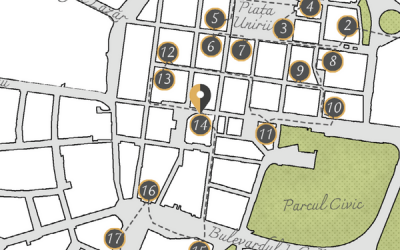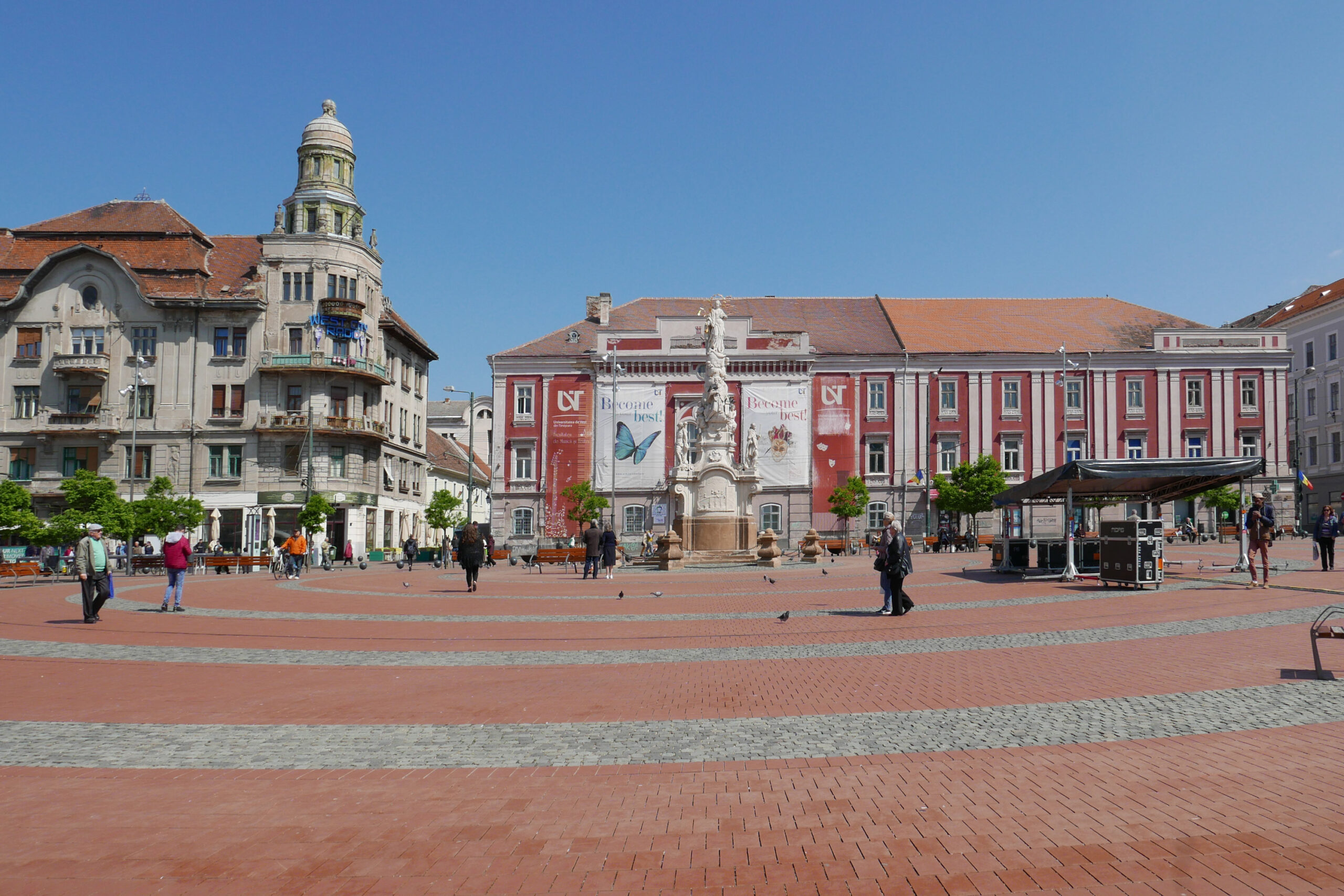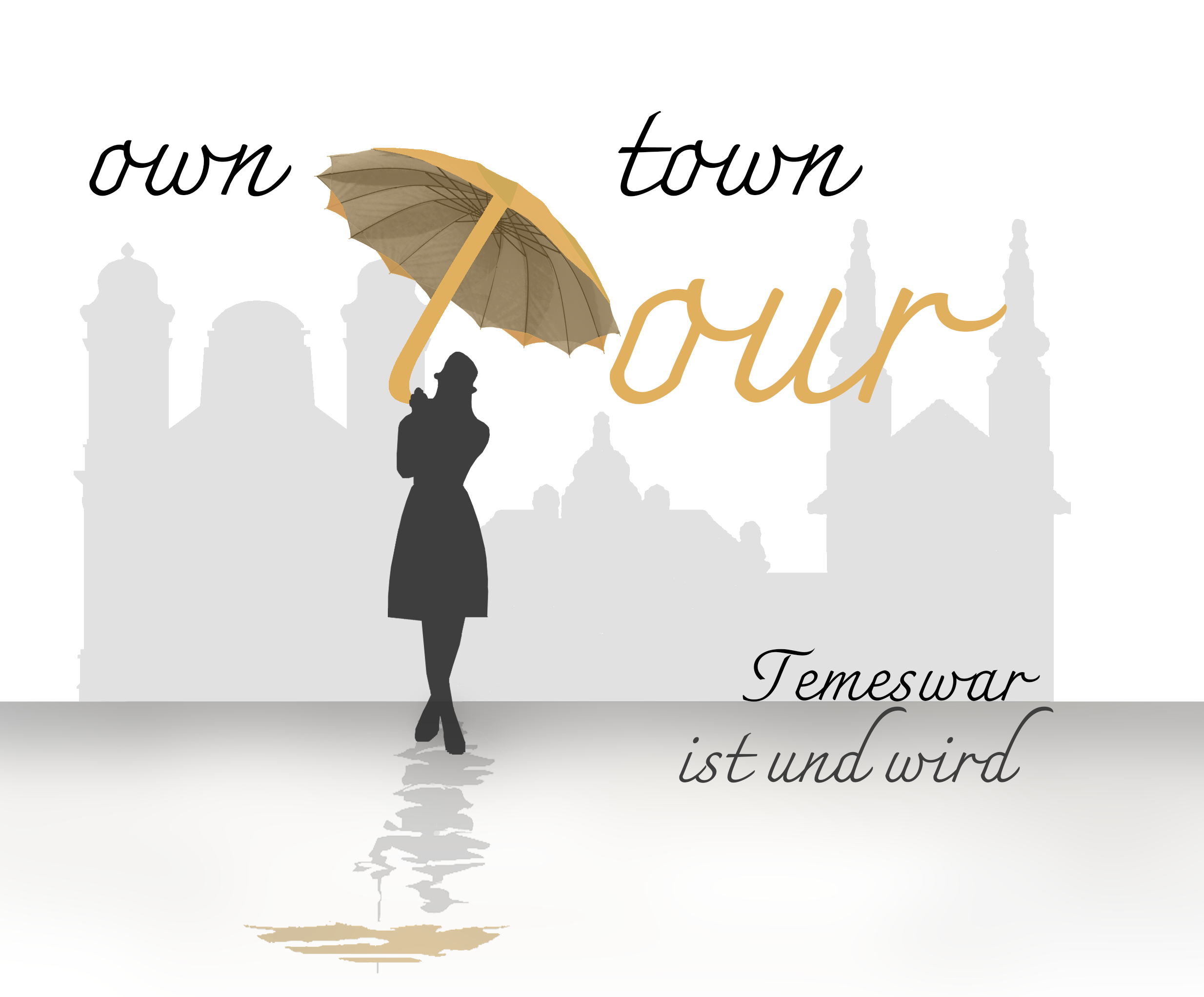Liberty Square
Piața Victoriei
from 1716
Public area


From a Square for Parades to a “Red Square”
Liberty Square (Piața Libertății), formerly Parade Square, is part of a series of interconnected squares in Timisoara’s downtown that form an important axis through the historic centre.
The conquest of the city by the Habsburgs marked a turning point in Timisoara. From then on, the focus was on Parade Square, the military shaped fortress and garrison town. Before the emergence of Cathedral Square, this was the centre of the city, with the most magnificent and important buildings of Timisoara.
The old town hall was built on the foundations of a Turkish bath in 1731-1734. The building, on which there is still an inscription from the Turkish period, was built by the Italian architect Pietro del Bronzo using elements of the Baroque and Renaissance style and housed the so-called German magistrate. After the Habsburgs took power, the fortress was inhabited first by Austrian officials and later by settlers.
In a decree from 1718, the establishment of two city magistrates was authorised, a German one for the Catholic population and a “Raizian” one for the Serbian and Romanian population. The coat of arms of that time can still be seen on the gable of the “German” town hall, which is decorated with a castle, similar to the palisade fortress with towers conquered by Prince Eugene of Savoy.
In addition to the Catholic faith, the Habsburgs also brought their saints with them. This is how the Nepomuk Column came to the square. It was erected in gratitude for the end of the terrible plague epidemic of 1739. The sandstone monument was created by Viennese sculptors in 1753-1756 of this most beloved saint, the patron saint of the Banat since 1727. The monument was dismantled and brought to Timisoara by barge via the Danube River, and the Tisza and Bega Canals.
In 1852, the Nepomuk Column was moved to another location in the city to make way for a victory monument of the revolution of 1848-1849. The square, which was first called Freedom Square, developed into an urban centre with commercial, publishing and banking buildings.
In 1969, in conjunction with the anniversary of the founding of the city, the Nepomuk monument was returned to its original place.
In 2013, concentric circles of red paving stones were laid from the monument, prompting the inhabitants of Timisoara to mockingly remark that the city now also had its own “Red Square”.
Today, the traffic-calmed, largely treeless square is an ideal location for a variety of functions and events.
Tour sights
- 1. Theresia Bastion
- 2. Lutheran Church
- 3. Union Square
- 4. Saint George’s Cathedral
- 5. Serbian Orthodox Cathedral
- 6. Miksa (Max) Steiner Palace
- 7. Brück House
- 8. Dicasterial Palace
- 9. Klapka Library
- 10. The “Guild Tree”
- 11. St. George's Square
- 12. Prince Eugene House
- 13. Citadel Synagogue
- 14. Liberty Square
- 15. Huniade Castle
- 16. National Opera House
- 17. Victory Square
- 18. Corso
- 19. Orthodox Cathedral
- 20. Piarist Ensemble
- 21. Reformed Church
- 22. Doja Street
- 23. Journey through Time
- 24. Rose Garden

